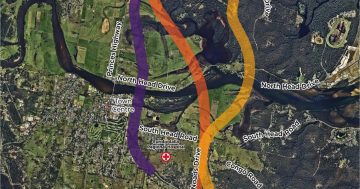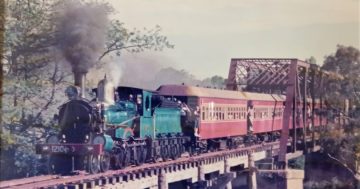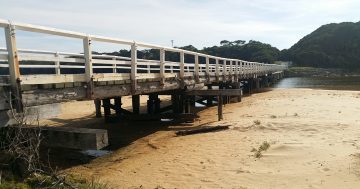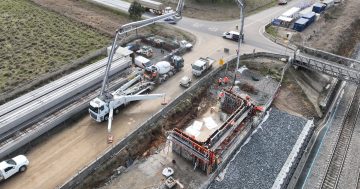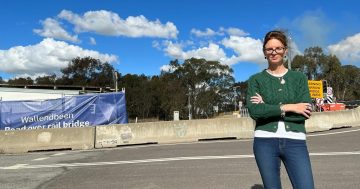
Traffic over the existing bridge in Moruya. Photo: Transport for NSW.
Transport for NSW recently revealed the preferred corridor for the Moruya Bypass and the community is invited to have its say on the proposed route until Monday, 14 June.
While supporters of the bypass have said it will reduce congestion and improve travel times for those driving along the South Coast, there is concern among some of Moruya’s community about the visual and social impact of the project.
What is the preferred route?
The preferred bypass corridor is about eight kilometres in length starting near Shelley Road and running parallel to the east of the existing highway to the Larrys Mountain Road intersection.
From Larrys Mountain Road, the corridor veers further east with a new bridge crossing the floodplain and Moruya River about 2km east of the existing bridge.
South of Moruya River, the corridor continues and crosses over South Head Road to re-join the existing highway.
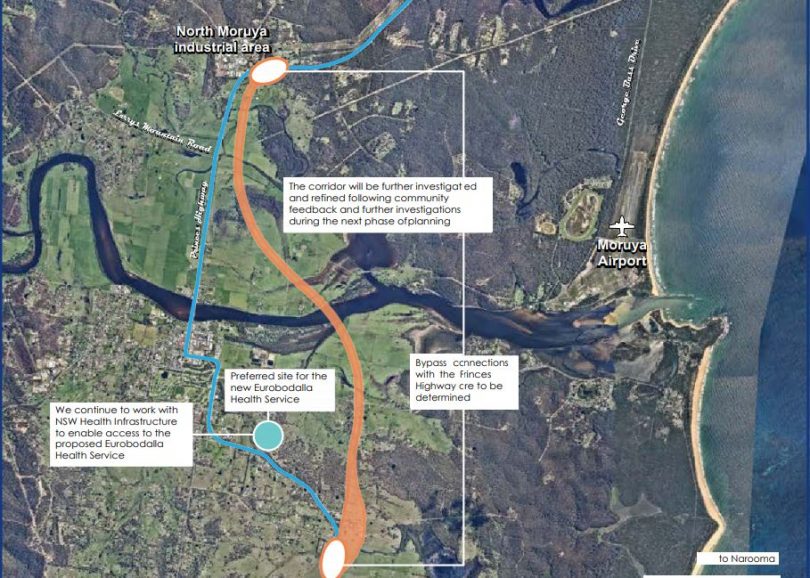
The preferred corridor for the Moruya Bypass (orange) alongside the existing Princes Highway (blue). Photo: Transport for NSW.
Transport for NSW said the preferred corridor will provide connections to the local traffic network at the northern end, near North Moruya Industrial Estate, and southern end, near Mountain View Road.
However, the agency won’t know where additional connections will be located until the project moves into the concept design development.
Transport for NSW considered five shortlisted corridors including the preferred 8km orange option, a 7km purple option, 11km blue option, 9km yellow option and 13km green option.
It said it based its decision on assessment of those options against key objectives such as safety, resilience and accessibility, and community consultation with residents, Eurobodalla Shire Council and Moruya Business Chamber.
What are the benefits?
The bypass is aimed at decreasing the travel time for motorists driving through Moruya and catering for the town’s future growth.
Eurobodalla’s population is projected to increase from 37,968 people in 2016 to 40,617 by 2031.
Transport for NSW said the key benefits include safer journeys for everyone including those using the bypass and town centre; reduced congestion and fewer heavy vehicles travelling through the town centre; improved flood resilience of the highway and better access to the proposed Eurobodalla Hospital and Moruya Tafe.
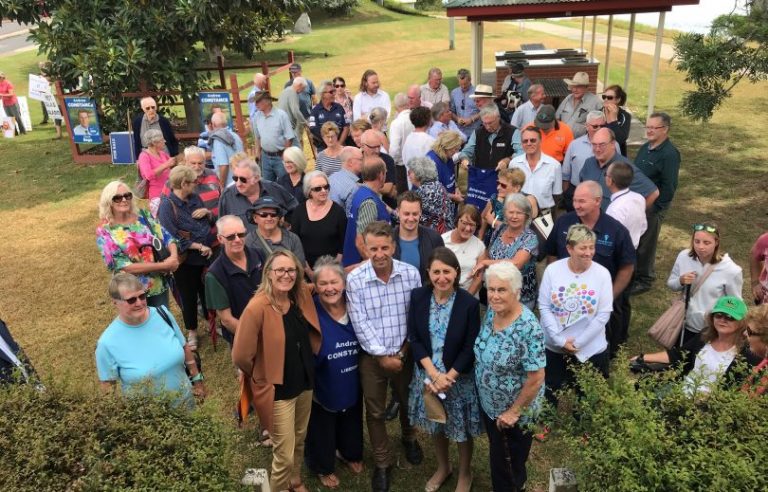
Front, from left: Eurobodalla Shire Council Mayor Liz Innes; Member for Bega Andrew Constance (centre); NSW Premier Gladys Berejiklian (second from right) and supporters at the Moruya Bypass announcement in March 2019. Photo: Alex Rea.
It also said the bypass of Moruya will unlock opportunities to improve the feel of the town centre for the benefit of locals, pedestrians and businesses and complement the appealing, tourist-friendly experience of the town.
Research of the Berrima and Mittagong bypasses by the Bureau of Transport and Communications Economics, found business sales, tourism, and property and land values grew after the bypasses were completed because less traffic through their town centres improved their appeal.
What are the community’s concerns?
The community is worried about the visual impact of the bypass raised across flood-prone paddocks.
It’s also concerned about the level of consultation with landowners within the corridor.
Some affected landholders said waiting to find out when and under what terms they’ll lose their property has impacted their wellbeing.
These landholders also said there had been little to no consultation.
Other community members are also concerned the Government will prioritise funding the bypass over the new Eurobodalla Hospital in Moruya.
What is Transport for NSW’s response to concerns?
In response to concerns about the bypass being built over flood-prone paddocks, Transport for NSW said all shortlisted options required major bridge structures across the floodplain.
It said the bridge height, length and exact location won’t be finalised until the concept design development.
Transport for NSW also said members of its project team attempted to door knock all properties within and near the preferred corridor before the route was announced.
It said members of the project team also met with a number of land and business owners following the announcement to discuss potential impacts and the next steps.
As the features and connections of the bypass corridor are yet to be determined, the full impacts to properties are not yet known.
Transport for NSW said more information will be shared directly with property owners as the design progresses and impacts are confirmed.
It also said compensation for landowners will be guided by the Land Acquisition (Just Terms Compensation) Act.
In terms of the hospital, Transport for NSW said it’s continuing to work with NSW Health Infrastructure as plans for the new hospital progress.
The NSW Government has also purchased the land for the new hospital between Albert Street and the Princes Highway in Moruya, further reinforcing its commitment.
NSW Minister for Transport and Roads and the Member for Bega, Andrew Constance, didn’t respond to a request for comment.
Feedback before 14 June can be provided via Transport for NSW’s survey and by pinning comments to the interactive map.







